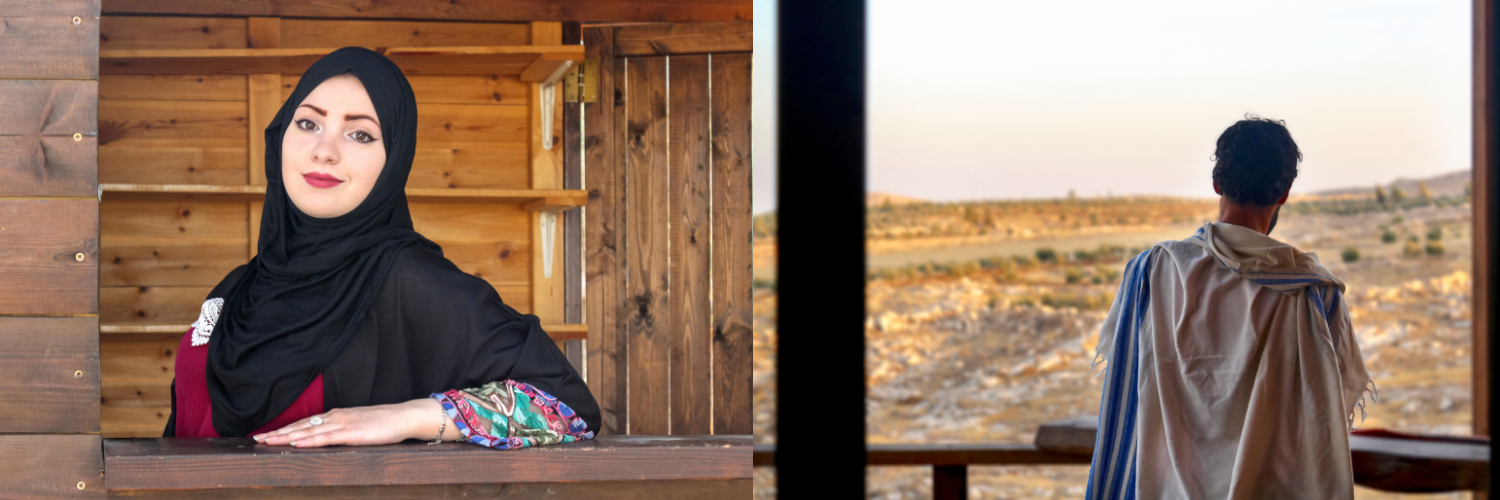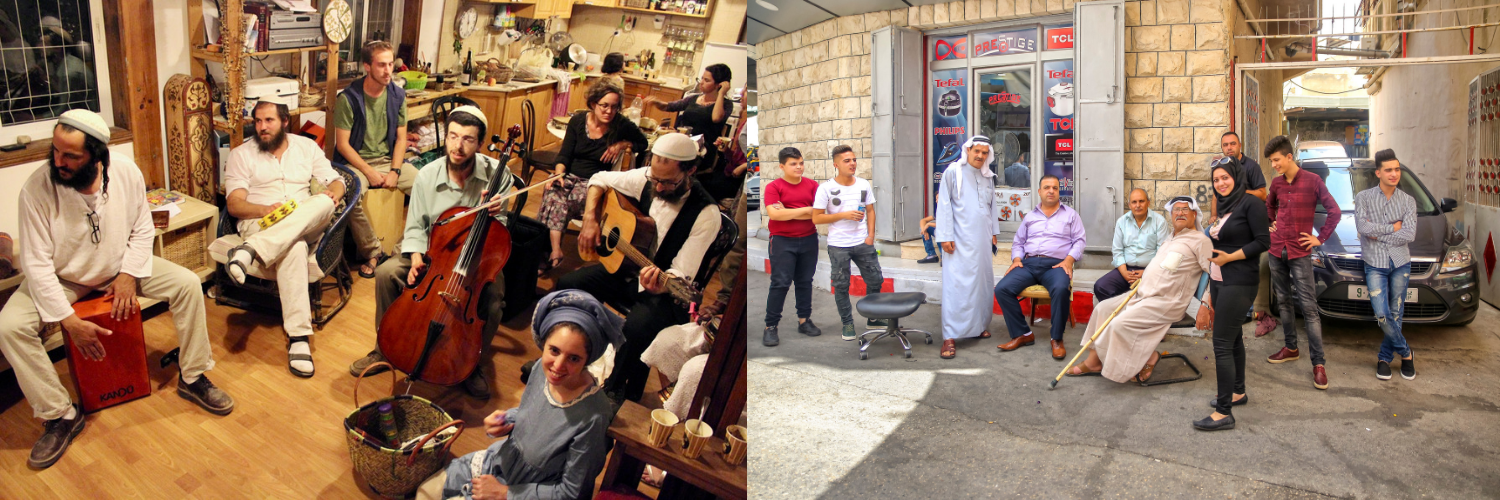Reflections: How Mirrored Humanity Dissolves Fear and Changes Bias
In a context where, for most observers, Israeli settlers and Palestinians are the last people who could be or should be talking to one another there are advocates for peace who try to create the necessary trust to bridge the divide. An unexpected encounter three years ago with one of these inspiring leaders changed the trajectory of my career.
“Come take part in our work. Run a photography workshop for Palestinian and Israeli women and girls,” exhorted Rabbi Hanan Schlesinger.
 Rabbi Hanan Schlesinger
Rabbi Hanan Schlesinger
Rabbi Hanan is one of the leaders of Roots, a grassroots initiative dedicated to dialogue, non-violence, and transformation at the heart of the conflict. The idea that I pioneer a women’s photography workshop in one of the most intractable and contentious conflicts in the world with no prior experience was more than bold, and yet I immediately felt drawn to lead the charge.
The photo workshops for Israeli settler women and Palestinian women are an opportunity for women “from the other side” to interact with each other, for some, for the very first time in their lives. Many of the participants feel that to do this is to come into contact with their perceived enemy.
“Suddenly, we find ourselves in the same room with each other and the walls are gone. […] We have a chance, sometimes, to create a place of astonishing mutuality reminding each other how acceptable we are.”
– Gregory Boyle. Tattoos on the Heart: The Power of Boundless Compassion
The women keep the cameras for the duration of the two-week workshop. They return to their homes to fulfill photo assignments by capturing their environments, their loved ones, and their daily lives.
After the initial session, photos are reviewed in each gathering with a final compilation shared during the fourth class. The women diligently use the lens for the sheer pleasure of documenting their lives and what is close to their hearts. That is an amazing opportunity to get insight into their worlds, their homes, their families. The photos that come out of their assignments are striking and often touchingly personal in their portrayal of loved ones in intimate settings. Through the sharing of personal images, what emerges more than anything else is the similarities in their shared humanity, and in particular, the obvious love they all share for their kin.
 A grandfather holding his sleeping grandson in his arms.
A grandfather holding his sleeping grandson in his arms.
A basic tutorial is given during the first session. We look at selected photos from prior Roots workshops to illustrate what makes a good image. The compilation is created around images that can communicate something both of beauty and substance. I talk about the power of photography and the significance to illustrate a life’s timeline filled with faces and places that we love. The review of striking photos is the chance to take in the experience of another person and to be receptive to what is being shared. The women bond over family, motherhood, and beauty.
This past summer I shared this short tutorial with a group of women. In the slideshow, there is a beautiful photo taken last year by Naomi, an Israeli participant, of her husband and grandson during Havdalah. They stand facing one another as the grandson performs the ritual of lighting a candle and looking at the luminous flame in wonder while his grandfather blesses a glass of wine. The dimly lit room with the candle as the only source of light, the composition, the colors — all are reminiscent of an Old Master painting.

As in prior years, we move on to the carefully planned steps and exercises so that the women can start the process of getting to know one another, and begin to explore portrait photography. For the first time, these women have a real perception and concept of the other through personal interaction. At the end of this first session, the participants leave carrying with pride the cameras that will be theirs for the remainder of the program. We are to meet three days later.
The night before the second session an unexpected and painful incident disrupts the workshop. A threatening post on Facebook denounces my Palestinian coordinator for his connection to Roots, calling him an instigator and an organizer of “normalization” gatherings*. Other people react on Facebook, maligning him.
These condemnations can escalate into violence or other grim consequences. The second session is canceled. Instrumental in enrolling and bringing the Palestinian women, my coordinator is greatly distressed and the Palestinian participants are scared and decide that they will not return.
I retrieve the cameras that were in the women’s home for 48 hours. Half of them have erased all the images from the memory card. But in one of the cameras, I find a gem, an image that takes my breath away, a photo of such beauty, of such meticulous composition… is the mirror image of the Havdalah photo shown during our first session together.

This anonymous photographer consciously and carefully re-created the setting of what she saw a few days ago. From memory, she replicated the image in all its aspects: subject matter, emotion, and composition.
In the first two summers I had singled out many photos with striking aesthetic appeal, but these two brought a new dimension that was deeply emotional: this place of astonishing mutuality that Gregory Boyle described. There had to be more images that would have their match in the “other’s” illustration, that would be the mirror image, and even more importantly, highlight the women’s basic humanity with shared values.
Upon my return to New York with more time and availability I return to the hundreds of images downloaded from all six workshops. It isn’t long before I come across images that have their match in the “other’s” illustration of her own life. As I scroll through the multitude of photos looking for the main elements that have commonality in subject, in composition, and in theme, it is with great excitement that I come to the realization that there are dozens of images that have their exact counterpart, a parallel where the sweetness of every heart can be found. There may be different religions, different languages, different cultures, and backgrounds, but these images show that we all belong to one human race.
Bringing out the humanity of others is the essence of the workshops. If transformation can happen in the intimate setting created, it is truly a gift beyond imagination. If these workshops can be helpful in global conversations toward peace the blessing is even more immense.

















